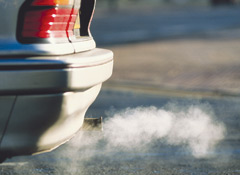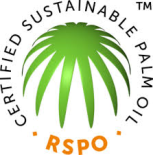Firstly, what is haze defined as? It is something that composes of smoke particles from huge peat(A brown material consisting of partly decomposed vegetable matter forming a deposit on acidic, boggy, ground, which is dried for use in gardening and as fuel.) and vegetation fires. The haze is also known to be an air-borne mixture of pollutants that includes soot particles, carbon dioxide and other toxic gases.
A picture of peat:

I have always thought that the haze that occurs here in Singapore was caused entirely by the forest fires in Sumatra, Indonesia. Which happens on the southwest monsoon season between June and September and becomes more severe during periods of dry weather. Well, apparently it is not the only reason for the haze🤔🤨. The forest fires are just considered as the main reason of the haze but it is not the only reason for the haze. There are other factors that contribute to the haze too. This is the very reason why I was attracted to do a blog about “What? We Kinda’ Caused the Haze?” as it got me curious to know, what else causes the haze?
It turns out that we kind of did cause the haze as, on 25th October 2017, evidence points to Singapore’s own sources of pollution, namely “particle vapour and local emissions from cars and factories”, as reported in The Straits Times on 26th October 2017. Cars and factories emit harmful gasses like soot and carbon dioxide which are gases that cause the haze.
Another reason for the haze is due to the use of palm oil as, a report done by the World Bank showed that more than 500,000 hectares of land burnt in 2015 was in palm oil concessions. Hence, this is causing Singapore to indirectly cause the haze as when there is a demand for palm oil in Singapore the supplier which in this case is Sumatra, would be motivated and continue to get palm oil with destructive practices, (eg. deforestation) like burning. Deforestation occurs as it is used to clear land for more oil palm plantations and it is done through the act of burning as it saves money on manpower and cost for chainsaws or tools to clear the land with. It is also easier and more efficient to burn down the trees due to the dry weather . Therefore, Singapore is just as guilty as Indonesia when it comes to causing the haze, it is simply the concept of supply and demand .If the demand is high the supply would have to increase. Yet, while steps have rightly been taken to identify sustainable sources of paper, little has been mentioned about how we can ensure the palm oil we buy is not contributing to the haze.
Another, factor that shows that Singapore is indirectly responsible for causing the haze is that we use too much PLASTIC! Plastic is so convenient for us to use that we no longer appreciate it. I personally feel that plastic can be a blessing due to its cheap cost, availability and versatility. However, it can also be a curse, as how easy it is to attain plastic it is not that easy to get rid of it. Through regular decomposition plastic can take up to 10 to 10,000 years to decompose. Hence, instead of waiting for it to decompose, we would incinerate it and not allow the to take up all the space. Singapore does own an incineration plant here in Tuas but when plastic and other trash are being incinerated it generates huge amounts of carbon dioxide and sulphur dioxide. Which is definitely bad for the environment and the whole haze situation. Which brings us up back to the point about how Singapore played a part in causing the haze.
Alright enough about the causes that make up the haze. It is time we talk about how we can improve the situation. First of all if you are travelling nearby you should walk and not take a motor vehicle as they emit harmful gases that contribute to the haze . Secondly, as mentioned above, a great motivator for the people in Sumatra to continue to burn down forests to create space for palm oil plantations, is the ‘demand’ for palm oil. If the ‘demand’ were to decrease the lesser forest would be burnt down to be used for oil palm plantations. Hence, the overall amount of haze would decrease. However, if there is really a need for palm oil people should get palm oils that is RSPO (Roundtable On Susta
. Secondly, as mentioned above, a great motivator for the people in Sumatra to continue to burn down forests to create space for palm oil plantations, is the ‘demand’ for palm oil. If the ‘demand’ were to decrease the lesser forest would be burnt down to be used for oil palm plantations. Hence, the overall amount of haze would decrease. However, if there is really a need for palm oil people should get palm oils that is RSPO (Roundtable On Susta inable Palm Oil) certified as they are a non-profit association that brings together palm oil producers, processors and traders, consumer goods manufacturers, retailers, investors, and social non-governmental organisations (NGOs) to develop and implement a global standard for sustainable palm oil. Which are rules that generally prohibits the use of fire on respecting land rights of local people.
inable Palm Oil) certified as they are a non-profit association that brings together palm oil producers, processors and traders, consumer goods manufacturers, retailers, investors, and social non-governmental organisations (NGOs) to develop and implement a global standard for sustainable palm oil. Which are rules that generally prohibits the use of fire on respecting land rights of local people.
Lastly, cutting down the amount of plastic/rubbish used would really help the haze to decrease significantly. As, the lesser the amount of rubbish used the lesser the amount of things that has to be incinerated. Hence, decreasing the amount of harmful gases created to contribute to the haze.
In conclusion, I personally feel that if everyone does their part in improving the haze situation be it, walking instead of taking the car or recycling plastic. These efforts would go a long way. One thing that stuck with me through this experience was a saying which said ,’ If we wish to avoid a day when everyone in Singapore has to abandon the country because of the terrible air’. Which was a scary thought and I feel that every citizen should make the effort to do something to better the situation, as this is our responsibility as citizens of this nation.
CITATIONS
http://blog.wwf.sg/climate-change/2016/06/pm-haze-guest-blog/
https://webreathewhatwebuy.com/_2015/haze/
https://www.straitstimes.com/opinion/when-the-haze-comes-from-singapores-own-backyard
http://blog.wwf.sg/sustainable-consumption/2018/04/plastics-enough-trash-talk/
http://eresources.nlb.gov.sg/infopedia/articles/SIP_2013-08-30_185150.html